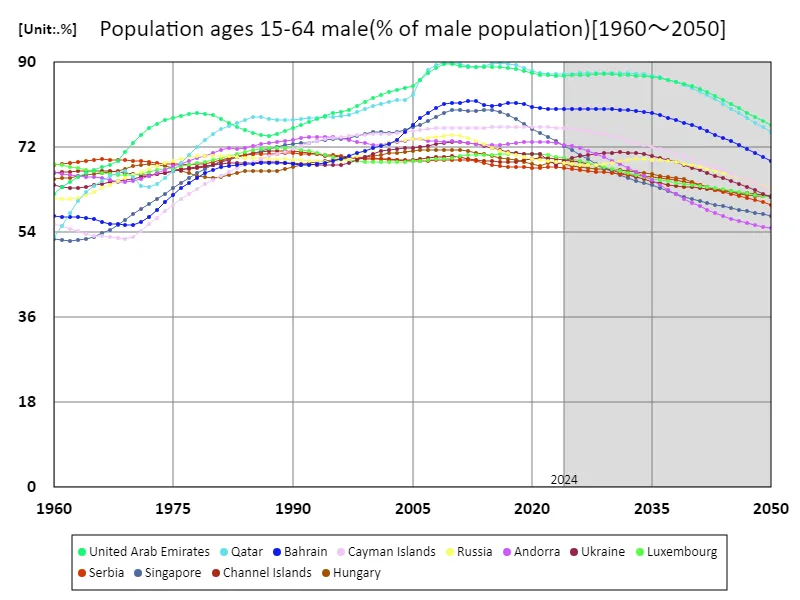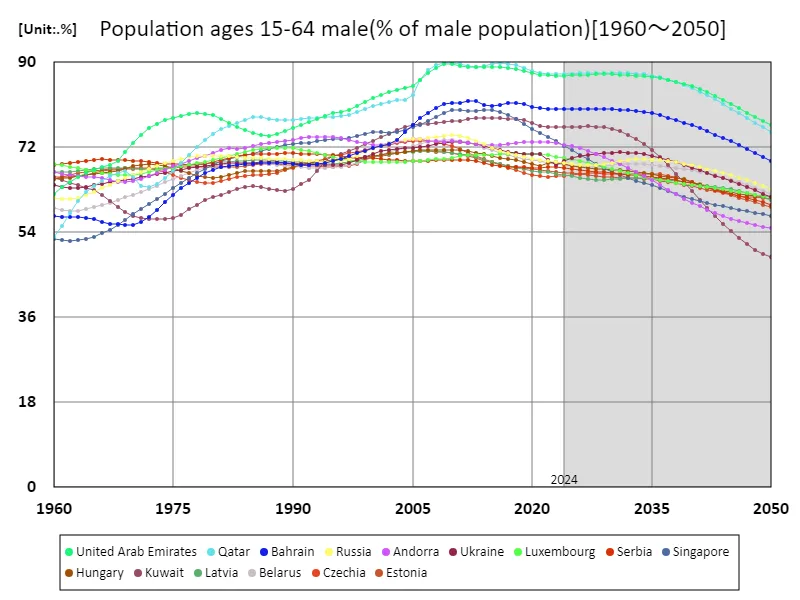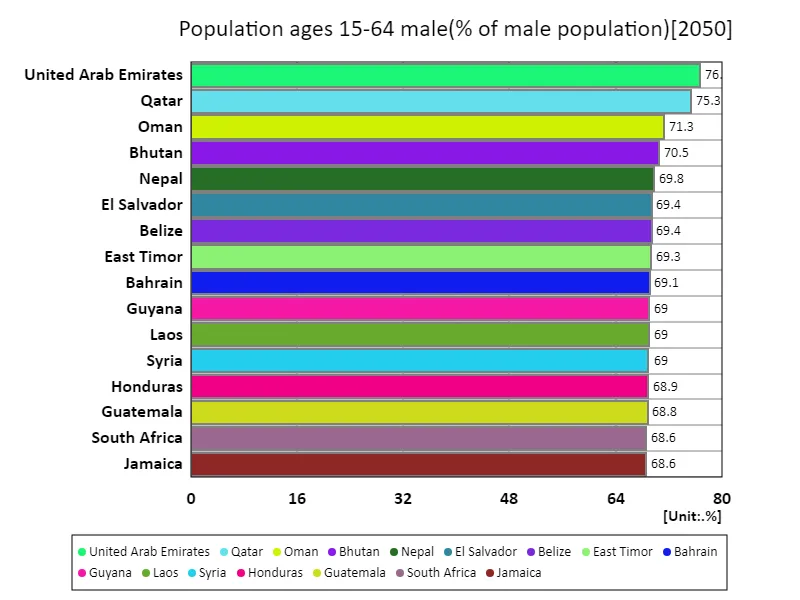Abstract
The male population ratio for those aged 15 to 64 has been influenced by factors such as labor market dynamics, migration patterns, and demographic structures. In countries like the United Arab Emirates, high male ratios reflect significant labor migration, particularly from South Asia, where men predominantly fill roles in construction and services. Historically, many oil-rich economies saw an influx of working-age males seeking better economic opportunities, driving up the male-to-female ratio. This trend is expected to persist in 2050, with countries reliant on migrant labor continuing to feature high male population ratios.
Men aged 15-64 (percentage of male population)
The male population ratio for those aged 15-64 has fluctuated significantly over the past decades, with Qatar peaking at 90% in 2010. This surge was largely driven by labor migration, particularly for the construction and oil sectors, where men filled the majority of jobs. Since then, Qatar’s ratio has decreased slightly to 83.7%, reflecting efforts to diversify its economy and reduce dependence on foreign labor. Globally, similar patterns have been seen in oil-rich and rapidly developing economies, where migrant male workers have historically outnumbered females, contributing to high male-to-female ratios. As economies mature, these ratios are gradually stabilizing.


The maximum is 90%[2010] of Qatar, and the current value is about 83.7%
Men aged 15-64 (percentage of male population) (Worldwide)
The male population ratio for those aged 15-64 reached its peak in Qatar in 2010 at 90%, driven by a heavy reliance on male migrant labor in sectors like construction and oil. This high male ratio was typical of oil-rich economies, where foreign workers significantly outnumber local females. Since 2010, Qatar’s ratio has slightly declined to 83.7%, reflecting efforts to diversify its workforce and reduce dependency on foreign labor. Globally, similar trends have been observed, with high male-to-female ratios in rapidly developing or resource-driven economies, gradually stabilizing as labor markets evolve.


The maximum is 90%[2010] of Qatar, and the current value is about 83.7%
Men aged 15-64 (percentage of male population) (Worldwide, latest year)
As of 2050, the United Arab Emirates (UAE) has the highest male population ratio of 76.7% for those aged 15-64. This reflects the nation’s reliance on foreign male labor, particularly in construction and service industries, with migrant workers driving much of the workforce. The global average stands at 63.4%, highlighting a broader trend in many countries of gender-balanced or female-majority populations in the working-age group. The UAE’s high ratio is part of a pattern seen in oil-rich and rapidly developing economies, where the demand for male labor has historically outpaced female participation in the workforce.


The maximum is 76.7% of United Arab Emirates, the average is 63.5%, and the total is 12.4k%
Men aged 15-64 years (percentage of male population) (region, latest year)
By 2050, South Asia is projected to have the highest male population ratio of 15-64-year-olds at 67.5%, driven by economic growth and demographic shifts that have led to increased male participation in sectors like agriculture and manufacturing. Globally, the average male ratio of 62.7% reflects the male-dominated labor markets in many developing economies. This imbalance highlights the need for adjustments to social security and pension systems as populations age. With continued economic development and urbanization, gender ratios are expected to gradually shift, promoting a more balanced labor market in the future.


The maximum is 61.7% of North America, the average is 61.7%, and the total is 61.7%



Comments